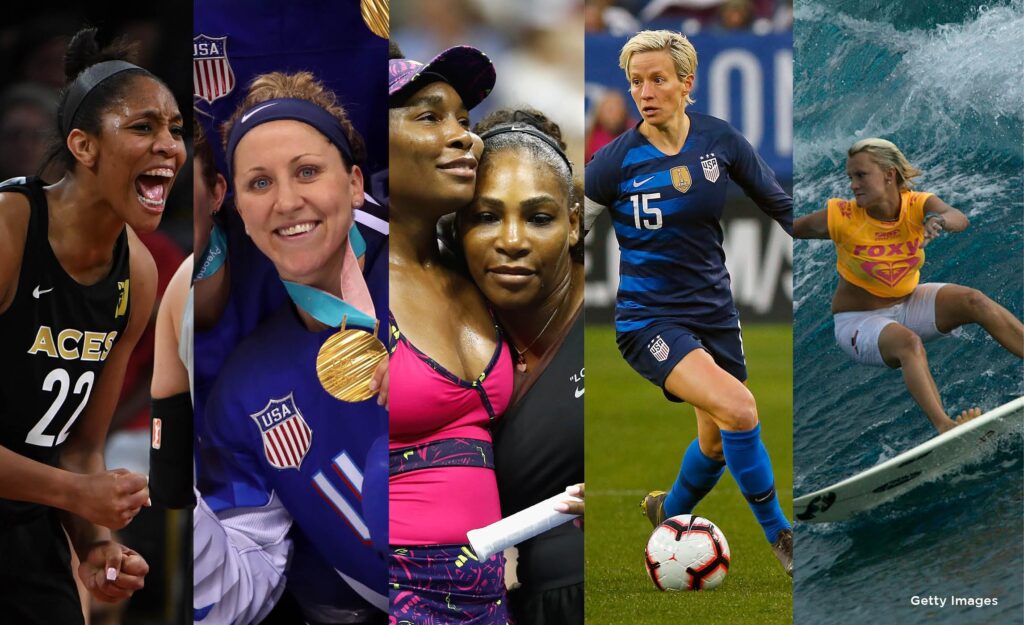In recent years, the legal underpinnings that protect and promote women’s sports have come under increasing scrutiny and debate. A recent opinion piece published by The New York Times in 2023 highlights growing challenges to the laws and policies that have long served as a foundation for gender equity in athletics. As governments, advocacy groups, and courts grapple with evolving definitions of gender and fairness in competition, the future of women’s sports hangs in the balance, raising profound questions about inclusion, equality, and the role of legal protections in shaping athletic opportunities.
The Impact of Legal Challenges on Women’s Athletic Participation
Recent legal disputes over women’s participation in sports have ignited heated debates, challenging decades of progress made toward gender equality in athletics. Courts across the country are being tasked with interpreting Title IX and other civil rights protections in new contexts, often dissecting the nuances of biological sex and gender identity. These rulings not only influence policies at the collegiate and professional levels but also send ripples through youth and amateur sports programs, determining who can compete where and under what conditions.
Key consequences of these legal challenges include:
- Restrictive eligibility criteria for transgender women athletes, often limiting their participation
- Increased scrutiny and regulations for women’s sports teams, affecting recruitment and competition
- Potential rollback of federal protections intended to ensure equal opportunity
| Year | Major Legal Event | Impact on Women’s Sports |
|---|---|---|
| 2020 | Supreme Court Bostock Ruling | Extended Title VII protections, indirectly influencing sports policies |
| 2022 | State Laws Restricting Transgender Participation | Increased barriers in high school and collegiate sports |
| 2023 | Federal Title IX Interpretation Update | Debate over sex discrimination definition intensifies |
Examining Title IX and the Evolving Definition of Fair Competition
Since its enactment in 1972, Title IX has been a cornerstone for promoting gender equality in education and athletics. Originally designed to prevent discrimination based on sex, its interpretation has evolved alongside shifting societal norms and legal challenges. Today, questions about how to define “fair competition” are reshaping the conversation, especially in women’s sports, where concerns about physical advantages and inclusion intersect. Courts and policymakers are grappling with balancing the original intent of the law with emerging realities, leading to nuanced debates across high schools, colleges, and professional leagues.
Key considerations fueling this debate include:
- Eligibility criteria: How should transgender and intersex athletes be accommodated without compromising competitive integrity?
- Biological factors: What role do physiological differences play in ensuring equitable competition?
- Legal precedents: How are recent court rulings influencing policies at the local and national levels?
| Aspect | Considerations |
|---|---|
| Competitive Fairness | Balance between inclusion and maintaining level playing field |
| Policy Adaptation | Updating rules in light of evolving scientific and social understanding |
| Legal Challenges | Increased litigation aimed at clarifying protections under Title IX |
Balancing Inclusivity and Equity in Women’s Sports Policies
Efforts to ensure both inclusivity and equity in women’s sports policies reveal a complex legal and social landscape. Advocates argue that sports should be a space accessible to all individuals who identify as women, emphasizing the importance of representation and equal opportunity. However, critics raise concerns about fairness and competitive balance, particularly when policies intersect with issues related to transgender athletes. This tension challenges lawmakers and sporting bodies to carefully design criteria that respect identity while maintaining the traditional contours of women’s sports.
Striking the right balance requires nuanced approaches, often involving detailed eligibility guidelines based on hormone levels, residency, or duration of gender transition. The following table highlights core principles currently debated within policy frameworks:
| Principle | Description | Policy Examples |
|---|---|---|
| Inclusivity | Ensuring all women, including transgender athletes, can participate fairly. | Self-identification allowed in some sports leagues. |
| Equity | Providing fair competition by recognizing physiological differences. | Hormone level thresholds enforced in NCAA. |
| Safety | Protecting athletes from potential harm due to physical disparities. | Weight class adjustments or separate divisions considered. |
| Legal Compliance | Adhering to anti-discrimination laws and human rights standards. | Title IX interpretations evolving with case law. |
- Policy makers must engage with scientific experts, legal authorities, and athlete communities to forge balanced rules.
- Transparency and consistent enforcement are pivotal to sustain trust across all stakeholders.
- Continual reassessment is essential as evolving research and societal values reshape the sports landscape.
Policy Recommendations to Protect the Integrity of Women’s Athletics
To safeguard fairness and opportunity within women’s sports, policymakers must implement clear, evidence-based guidelines that prioritize biological distinctions while respecting legal rights. Establishing objective criteria for athlete eligibility, anchored in scientific research on sex and gender differences, can help preserve the competitive integrity of women’s competitions without resorting to discrimination. This should be complemented by standardized testing protocols and transparent appeals processes that ensure accountability and guard against arbitrary rulings.
Additionally, investment in expanded funding and support for women’s athletic programs is crucial to reinforce their growth and visibility amid ongoing legal challenges. Stakeholders should promote inclusive yet fair participation policies through collaboration among governing bodies, legal experts, and athletes themselves. The following table summarizes key policy proposals gaining traction in legislative and sports administration circles:
| Policy Measure | Purpose | Impact |
|---|---|---|
| Biological Marker Eligibility | Defines participation based on measurable sex characteristics | Enhances fairness, reduces disputes |
| Independent Review Panels | Ensures impartial resolution of eligibility cases | Builds athlete trust, increases transparency |
| Increased Funding for Women’s Sports | Supports program development and outreach | Improves competitive opportunities |
| Legal Safeguards Against Discrimination | Protects all athletes’ rights within clear boundaries | Balances inclusion with competitive fairness |
Insights and Conclusions
As the debate over the legal foundations of women’s sports continues to unfold, it remains clear that the stakes extend far beyond the playing field. Legal challenges, policy decisions, and shifting public opinions are reshaping the landscape of athletic competition and gender equity. How these issues are resolved will not only define the future of women’s sports but also influence broader conversations about fairness, inclusion, and civil rights in society at large. The coming months and years will be critical in determining whether the legal protections established over decades can withstand the mounting pressures they now face.





